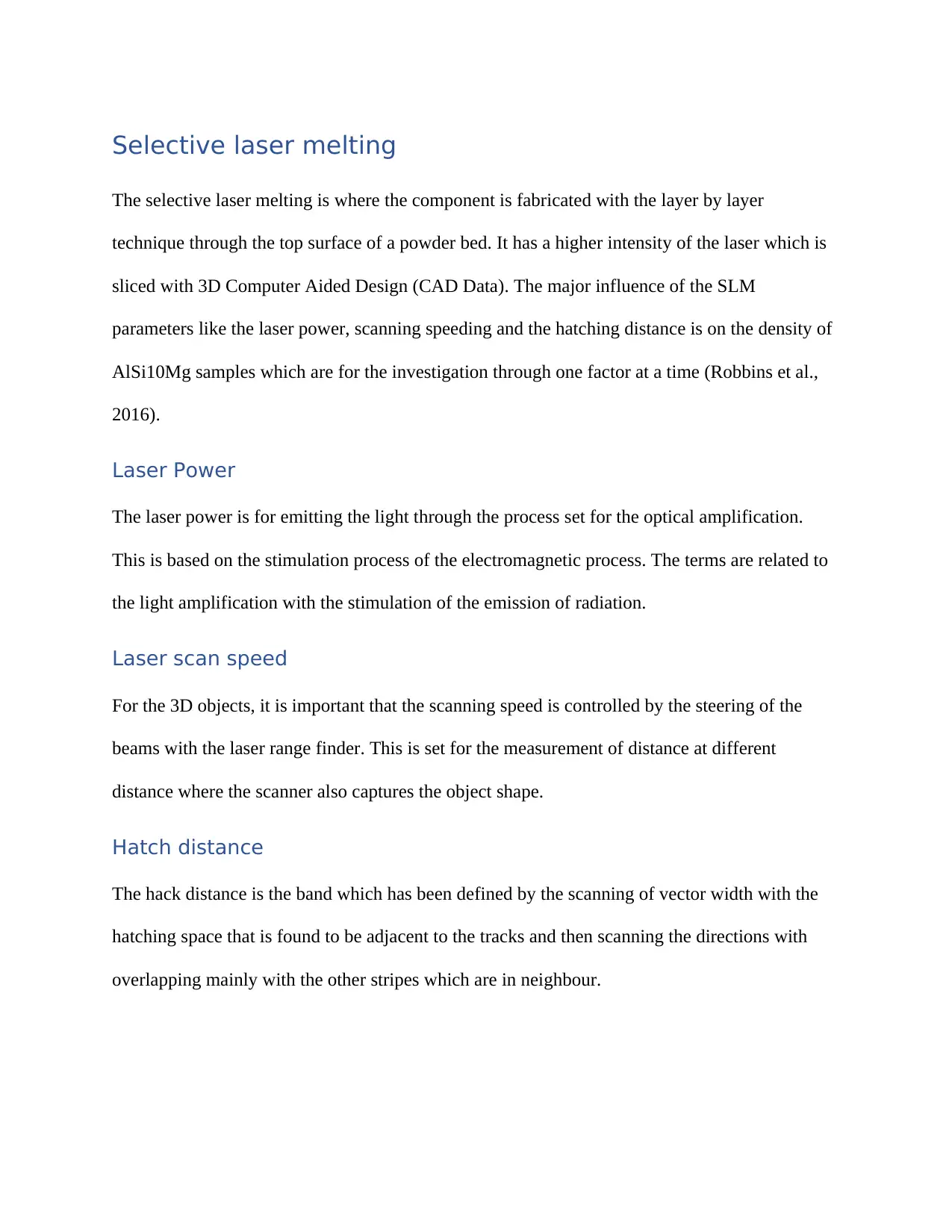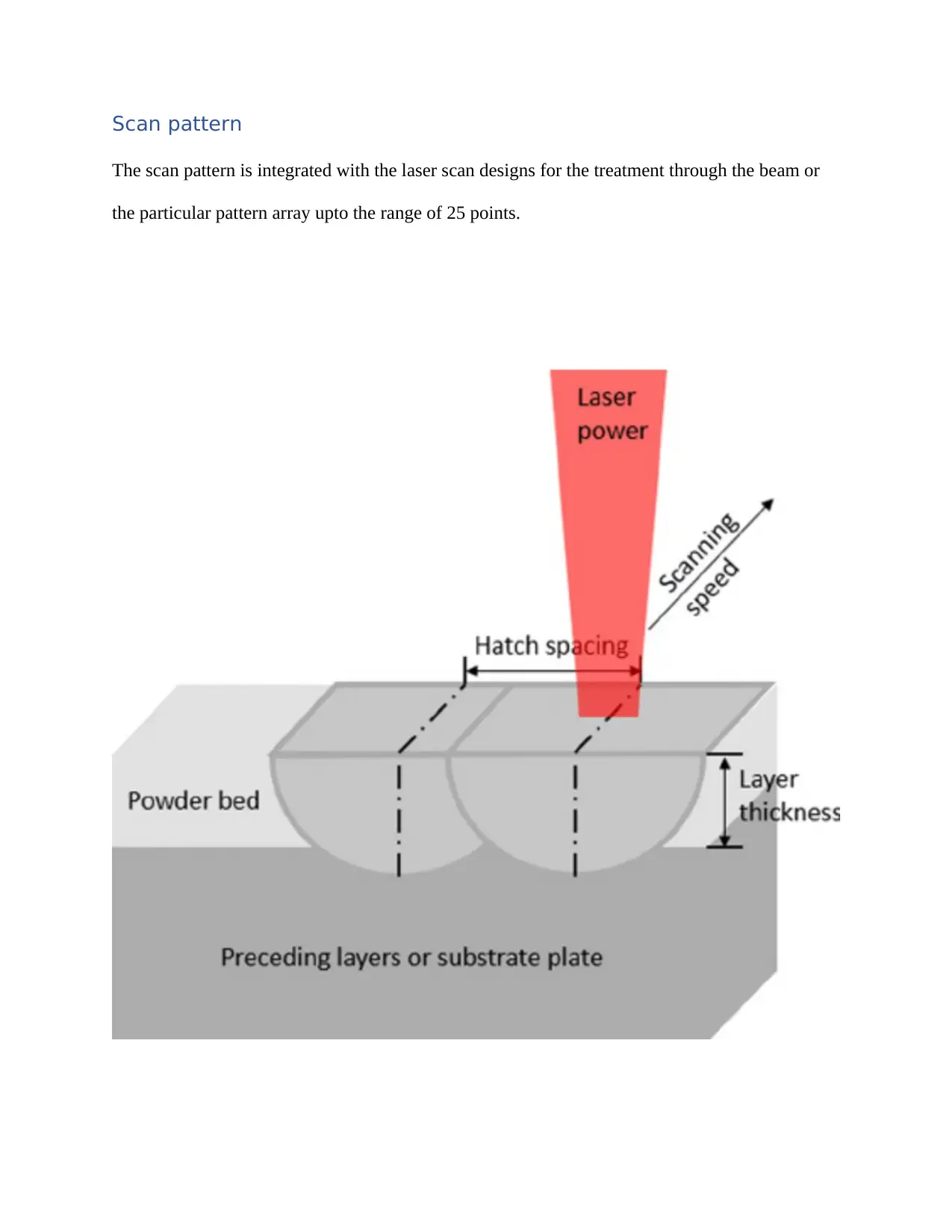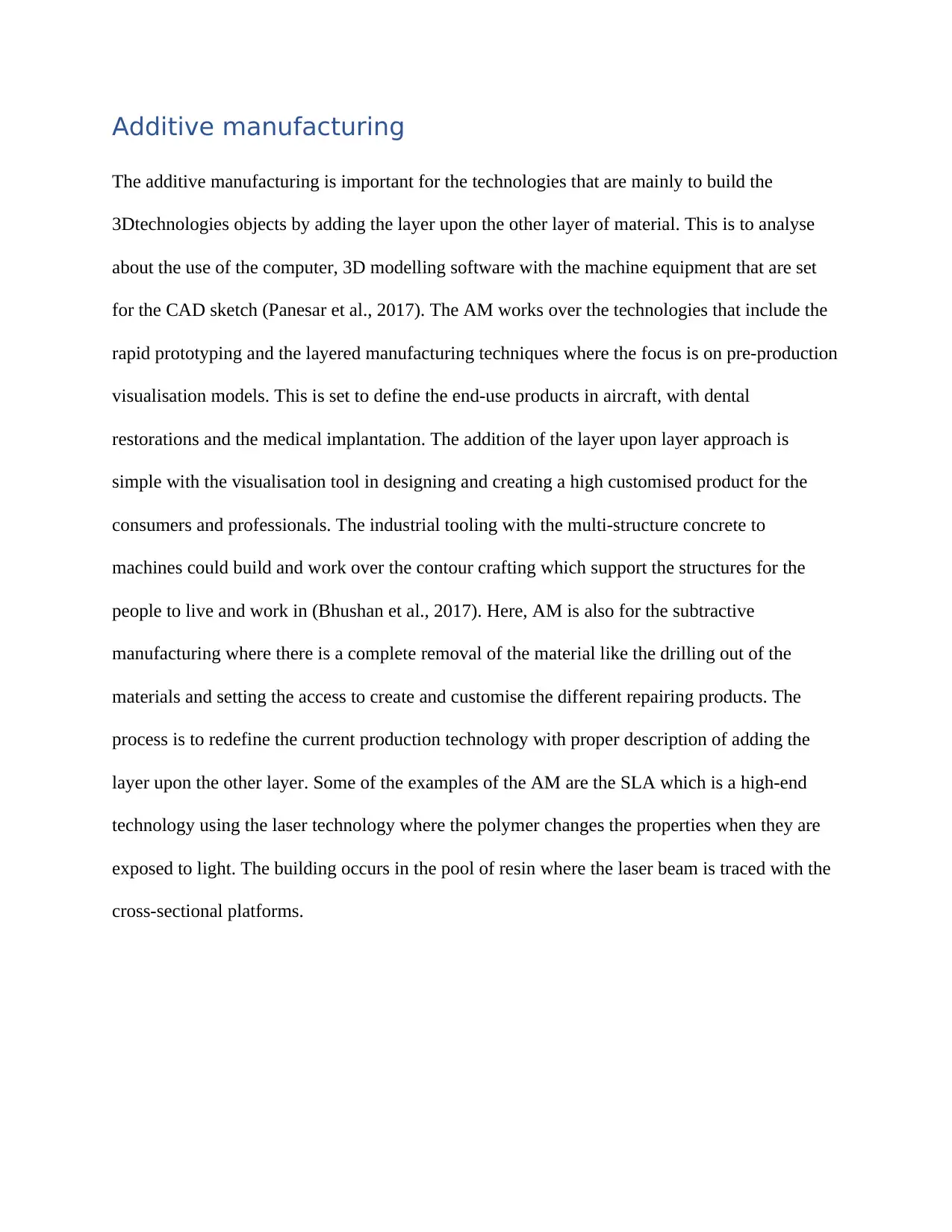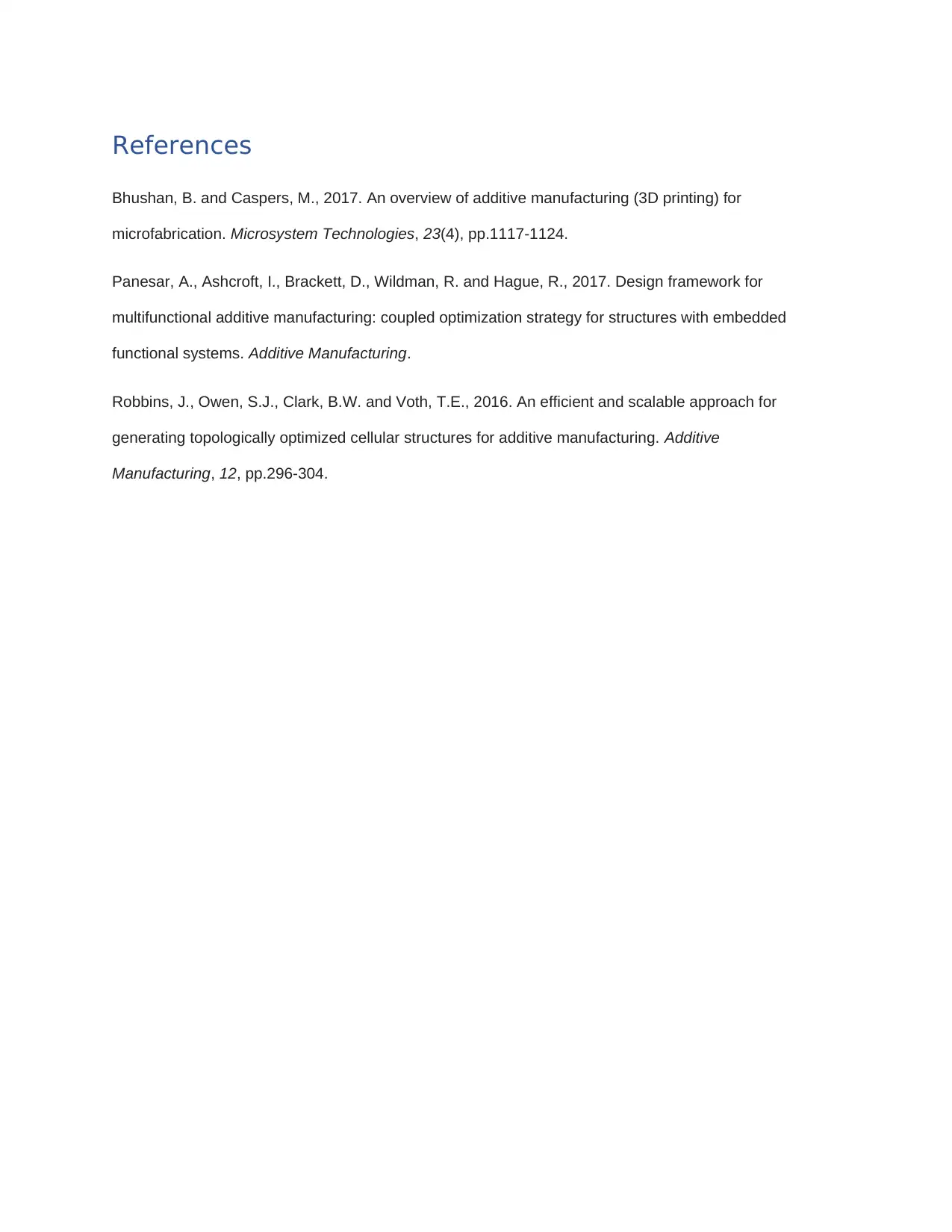Report on Selective Laser Melting and Additive Manufacturing
VerifiedAdded on 2020/05/01
|6
|690
|316
Report
AI Summary
This report delves into the realm of Selective Laser Melting (SLM) and Additive Manufacturing (AM), crucial technologies in modern engineering. It meticulously examines the SLM process, detailing the layer-by-layer fabrication technique using high-intensity lasers guided by 3D CAD data. The report highlights the influence of key SLM parameters such as laser power, scanning speed, and hatch distance on the density of AlSi10Mg samples. Furthermore, it explores the broader context of AM, emphasizing its role in building 3D objects through the sequential addition of material layers. The report discusses the importance of scan patterns, additive manufacturing techniques, and the applications of AM across various industries, including aerospace, medical, and construction. References to supporting research are included to provide a robust understanding of the subject matter.

report
Paraphrase This Document
Need a fresh take? Get an instant paraphrase of this document with our AI Paraphraser

Contents
Selective laser melting.....................................................................................................................2
Laser Power.................................................................................................................................2
Laser scan speed..........................................................................................................................2
Hatch distance..............................................................................................................................2
Scan pattern.................................................................................................................................3
Additive manufacturing...................................................................................................................4
References........................................................................................................................................5
Selective laser melting.....................................................................................................................2
Laser Power.................................................................................................................................2
Laser scan speed..........................................................................................................................2
Hatch distance..............................................................................................................................2
Scan pattern.................................................................................................................................3
Additive manufacturing...................................................................................................................4
References........................................................................................................................................5

Selective laser melting
The selective laser melting is where the component is fabricated with the layer by layer
technique through the top surface of a powder bed. It has a higher intensity of the laser which is
sliced with 3D Computer Aided Design (CAD Data). The major influence of the SLM
parameters like the laser power, scanning speeding and the hatching distance is on the density of
AlSi10Mg samples which are for the investigation through one factor at a time (Robbins et al.,
2016).
Laser Power
The laser power is for emitting the light through the process set for the optical amplification.
This is based on the stimulation process of the electromagnetic process. The terms are related to
the light amplification with the stimulation of the emission of radiation.
Laser scan speed
For the 3D objects, it is important that the scanning speed is controlled by the steering of the
beams with the laser range finder. This is set for the measurement of distance at different
distance where the scanner also captures the object shape.
Hatch distance
The hack distance is the band which has been defined by the scanning of vector width with the
hatching space that is found to be adjacent to the tracks and then scanning the directions with
overlapping mainly with the other stripes which are in neighbour.
The selective laser melting is where the component is fabricated with the layer by layer
technique through the top surface of a powder bed. It has a higher intensity of the laser which is
sliced with 3D Computer Aided Design (CAD Data). The major influence of the SLM
parameters like the laser power, scanning speeding and the hatching distance is on the density of
AlSi10Mg samples which are for the investigation through one factor at a time (Robbins et al.,
2016).
Laser Power
The laser power is for emitting the light through the process set for the optical amplification.
This is based on the stimulation process of the electromagnetic process. The terms are related to
the light amplification with the stimulation of the emission of radiation.
Laser scan speed
For the 3D objects, it is important that the scanning speed is controlled by the steering of the
beams with the laser range finder. This is set for the measurement of distance at different
distance where the scanner also captures the object shape.
Hatch distance
The hack distance is the band which has been defined by the scanning of vector width with the
hatching space that is found to be adjacent to the tracks and then scanning the directions with
overlapping mainly with the other stripes which are in neighbour.
⊘ This is a preview!⊘
Do you want full access?
Subscribe today to unlock all pages.

Trusted by 1+ million students worldwide

Scan pattern
The scan pattern is integrated with the laser scan designs for the treatment through the beam or
the particular pattern array upto the range of 25 points.
The scan pattern is integrated with the laser scan designs for the treatment through the beam or
the particular pattern array upto the range of 25 points.
Paraphrase This Document
Need a fresh take? Get an instant paraphrase of this document with our AI Paraphraser

Additive manufacturing
The additive manufacturing is important for the technologies that are mainly to build the
3Dtechnologies objects by adding the layer upon the other layer of material. This is to analyse
about the use of the computer, 3D modelling software with the machine equipment that are set
for the CAD sketch (Panesar et al., 2017). The AM works over the technologies that include the
rapid prototyping and the layered manufacturing techniques where the focus is on pre-production
visualisation models. This is set to define the end-use products in aircraft, with dental
restorations and the medical implantation. The addition of the layer upon layer approach is
simple with the visualisation tool in designing and creating a high customised product for the
consumers and professionals. The industrial tooling with the multi-structure concrete to
machines could build and work over the contour crafting which support the structures for the
people to live and work in (Bhushan et al., 2017). Here, AM is also for the subtractive
manufacturing where there is a complete removal of the material like the drilling out of the
materials and setting the access to create and customise the different repairing products. The
process is to redefine the current production technology with proper description of adding the
layer upon the other layer. Some of the examples of the AM are the SLA which is a high-end
technology using the laser technology where the polymer changes the properties when they are
exposed to light. The building occurs in the pool of resin where the laser beam is traced with the
cross-sectional platforms.
The additive manufacturing is important for the technologies that are mainly to build the
3Dtechnologies objects by adding the layer upon the other layer of material. This is to analyse
about the use of the computer, 3D modelling software with the machine equipment that are set
for the CAD sketch (Panesar et al., 2017). The AM works over the technologies that include the
rapid prototyping and the layered manufacturing techniques where the focus is on pre-production
visualisation models. This is set to define the end-use products in aircraft, with dental
restorations and the medical implantation. The addition of the layer upon layer approach is
simple with the visualisation tool in designing and creating a high customised product for the
consumers and professionals. The industrial tooling with the multi-structure concrete to
machines could build and work over the contour crafting which support the structures for the
people to live and work in (Bhushan et al., 2017). Here, AM is also for the subtractive
manufacturing where there is a complete removal of the material like the drilling out of the
materials and setting the access to create and customise the different repairing products. The
process is to redefine the current production technology with proper description of adding the
layer upon the other layer. Some of the examples of the AM are the SLA which is a high-end
technology using the laser technology where the polymer changes the properties when they are
exposed to light. The building occurs in the pool of resin where the laser beam is traced with the
cross-sectional platforms.

References
Bhushan, B. and Caspers, M., 2017. An overview of additive manufacturing (3D printing) for
microfabrication. Microsystem Technologies, 23(4), pp.1117-1124.
Panesar, A., Ashcroft, I., Brackett, D., Wildman, R. and Hague, R., 2017. Design framework for
multifunctional additive manufacturing: coupled optimization strategy for structures with embedded
functional systems. Additive Manufacturing.
Robbins, J., Owen, S.J., Clark, B.W. and Voth, T.E., 2016. An efficient and scalable approach for
generating topologically optimized cellular structures for additive manufacturing. Additive
Manufacturing, 12, pp.296-304.
Bhushan, B. and Caspers, M., 2017. An overview of additive manufacturing (3D printing) for
microfabrication. Microsystem Technologies, 23(4), pp.1117-1124.
Panesar, A., Ashcroft, I., Brackett, D., Wildman, R. and Hague, R., 2017. Design framework for
multifunctional additive manufacturing: coupled optimization strategy for structures with embedded
functional systems. Additive Manufacturing.
Robbins, J., Owen, S.J., Clark, B.W. and Voth, T.E., 2016. An efficient and scalable approach for
generating topologically optimized cellular structures for additive manufacturing. Additive
Manufacturing, 12, pp.296-304.
⊘ This is a preview!⊘
Do you want full access?
Subscribe today to unlock all pages.

Trusted by 1+ million students worldwide
1 out of 6
Related Documents
Your All-in-One AI-Powered Toolkit for Academic Success.
+13062052269
info@desklib.com
Available 24*7 on WhatsApp / Email
![[object Object]](/_next/static/media/star-bottom.7253800d.svg)
Unlock your academic potential
Copyright © 2020–2025 A2Z Services. All Rights Reserved. Developed and managed by ZUCOL.



